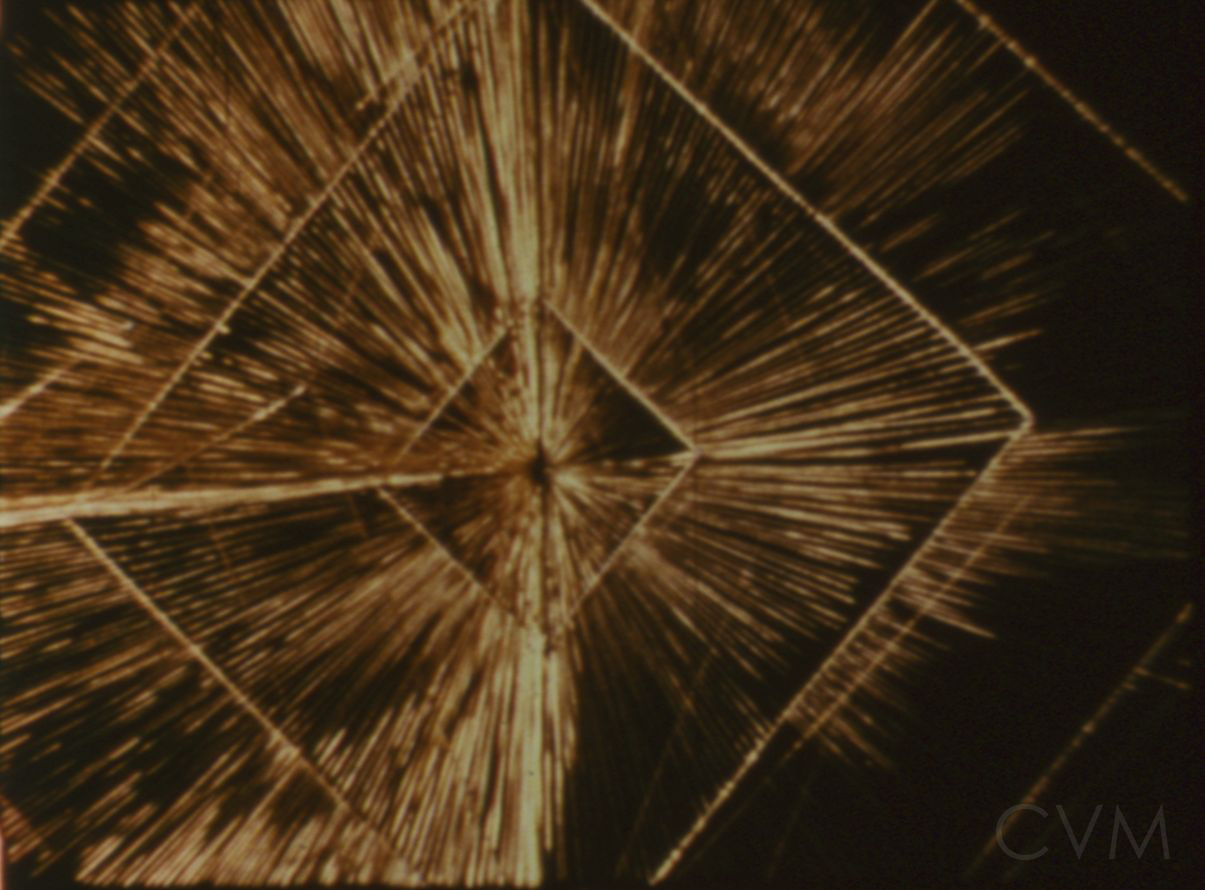

The Sun Film
John Cage and Richard Lippold, The Sun (1956)
In the summer of 1956, John Cage and American sculptor Richard Lippold met to assemble footage documenting Lippold’s construction and display of his monumental wire sculpture, The Sun, Variation Within a Sphere No. 10 (1953-56), commissioned by the Metropolitan Museum of Art. To edit the footage, Cage applied his unique and meticulous approach to indeterminate compositions for magnetic tape to film, creating a work that defied boundaries between medium-specific artworks via process well before such techniques were applied to intermedia art and experimental film in the 1960s.
The first of the 2 films documents the construction of the sculpture, and contains 116 individual edits in just six minutes, with cuts as short as two frames and as long as 839. Cage edited this first film himself. To determine the individual edits Cage composed a detailed graphic score (now in the collection of the Getty Research Institute, Los Angeles) that contained an array of points within a grid created through chance procedures. The footage was divided into 24 different categories, thus assuring that no single intentional perspective or footage of individual stages in the creation of the sculpture would determine the overall experience, and the graphic score plots the succession of shot categories and lengths over time according to the points. The second of the 2 films documents the completed sculpture, and was edited according to a similar graphic score using six categories of shots, by an unknown editor.
Cage’s participation in the creation of this film highlights a heretofore unacknowledged connection between the two artists, and his approach to the project represents a unique usage of the film medium to emphasize the phenomenal presence of Lippold’s creation. By utilizing chance procedures to select the shot arrangement, the film reveals the experience of unmediated perception the sculpture itself projects on the viewer, highlighting the similarities between kinetic sculpture and process composition by indeterminately presenting the work at various stages of completion. The resulting films are merely examples of countless interpolations of the chance procedures used to create the graphic score, and provide a truly indeterminate glimpse both of the artistic process and the phenomenological experience of kinetic sculpture. The films were discovered by musicologist Richard Brown in a storage locker, and restored by Center for Visual Music in Los Angeles, with the support of a National Film Preservation Foundation grant in association with The John Cage Trust.-Richard Brown, 2013
The films are distributed by Center for Visual Music, cvmaccess (at) gmail.com
Recently the films screened at Tate Modern, London; Hammer Museum's Billy Wilder Theatre, Los Angeles (2013); and Bard College, Annandale-on-Hudson, New York, in a program of New Restorations and Discoveries by CVM. In November 2014 the films screened at the Museum of Modern Art's annual Festival of Preservation.